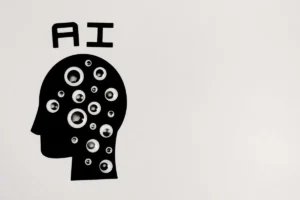- Your cart is empty
- Continue Shopping
Supercomputer vs Human Brain

In the age of technical geniuses, the comparison between supercomputers and the human brain has become an attractive topic. Supercomputers, with their huge processing control, have transformed businesses, but can they match the difficulty and adaptability of the human brain?
Processing Speed of Supercomputer
When it comes to raw processing speed, supercomputers undoubtedly have the upper hand. These technologies can do trillions of calculations per second, dwarfing the brain’s mental abilities. However, is pure speed associated with larger intelligence?
Memory Capacity
The human brain, with its complicated neural system, owns an amazing volume for memory storage. Super computers, while capable of vast data storage, struggle to replicate the brain’s efficiency in accessing and retrieving information. It’s not just about quantity but the quality of memory storage.
Energy Efficiency
One aspect where the human brain excels is energy efficiency. Despite its extraordinary processing capabilities, the brain works on a portion of the energy spent by supercomputers.
Parallel Processing
Super computers leverage parallel processing to handle multiple tasks simultaneously. This is a part where they align with the human brain, which is skilled at parallelizing purposes. Still, the human brain’s similar dispensation is extremely tangled with feelings and awareness, adding a layer of difficulty.
Learning and Adaptability
The human brain’s capability to study and adapt is supreme. Super computers may excel in repetitive tasks, but can they truly mimic the intricate learning mechanisms of the brain?
Problem-Solving Abilities
While super computers shine in resolving difficult mathematical problems, the human brain’s problem-solving capabilities spread outside calculations. Perception, imagination, and emotional intelligence play important roles in human executive, features that continue challenging for artificial intelligence to duplicate.
Creativity and Intuition
The human brain’s capability for creativity and perception enhances a component of impulsiveness and invention that now eludes even the most progressive super computers. The essence of art, mind, and mental rational leftovers are resolutely entrenched in human thought.
Limitations of Supercomputers
Despite their ability, super computers have limits. They depend on clear programming, lack honest understanding, and are liable to data prejudices. The human brain, on the other hand, possesses the innate ability to comprehend and contextualize information, transcending mere data processing.
Future Implications
The path of supercomputers and the human brain proposes a coming where partnership might be essential. Associations between the human brain and artificial intelligence have the probability to redefine potentials as we expose more thrillers about intelligence and improvement in calculating abilities.
Collaboration Opportunities
Slightly than a competition, imagining a partnership between supercomputers and the human brain unlocks paths for invention. The union of human vision and machine accuracy could lead to inventions in fields like healthcare, investigation, and problem-solving.
The Human Touch
Amidst the technological fervor, recognizing the unique qualities of the human brain becomes imperative. Emotional intelligence, empathy, and the ability to appreciate aesthetics are facets that make human contributions irreplaceable.
Balancing Technology and Humanity
Preserving and developing the inborn makings of the human brain while yoking the power of supercomputers can pave the way for the musical existence of technology and humankind.
Conclusion
In the grand tapestry of intelligence, both supercomputers and the human brain contribute unique threads. The future lies in understanding, rising, and consistent these varied fundamentals, making an interaction that pushes humanity towards new borders of information and invention.



